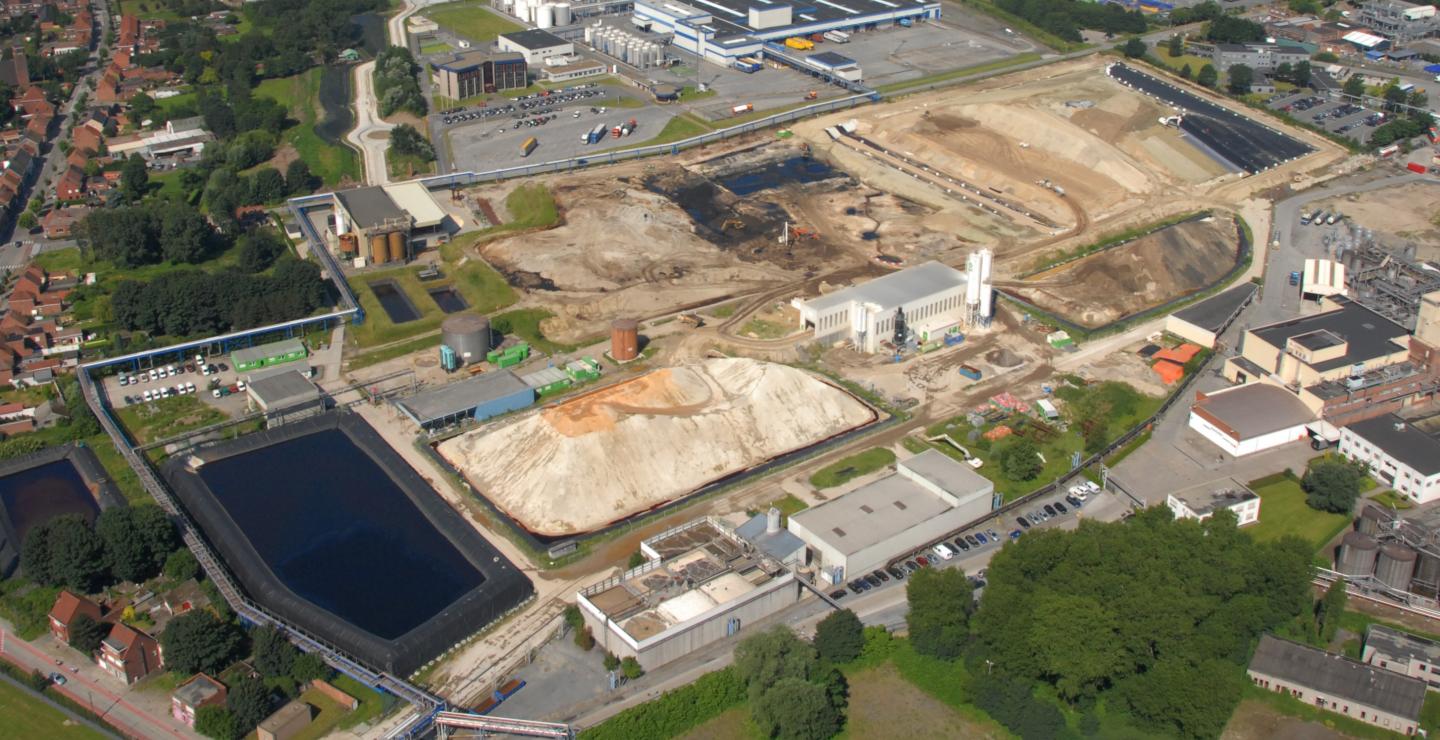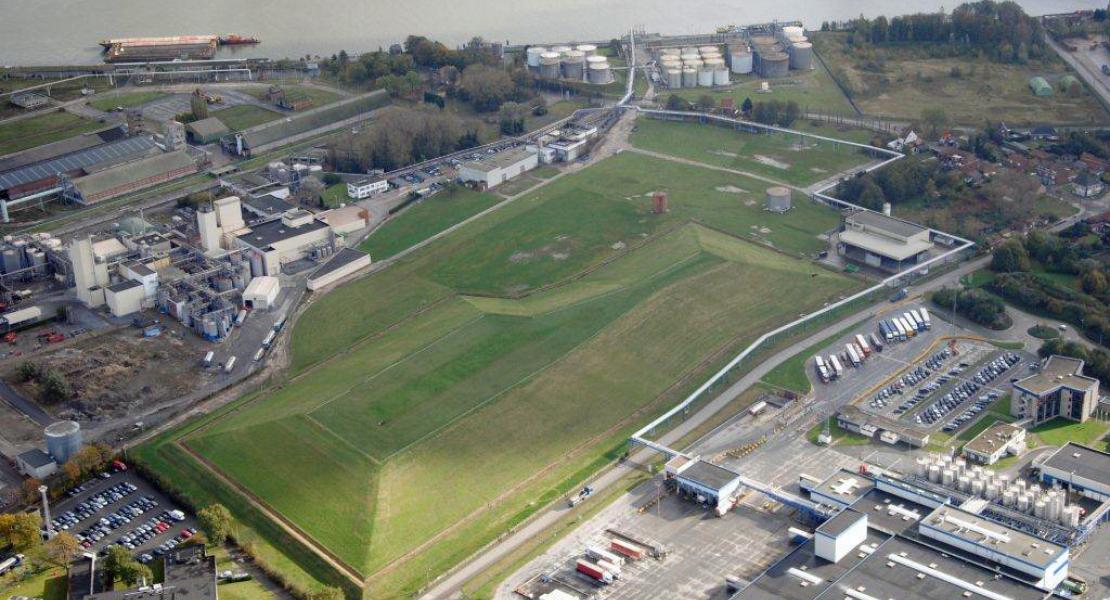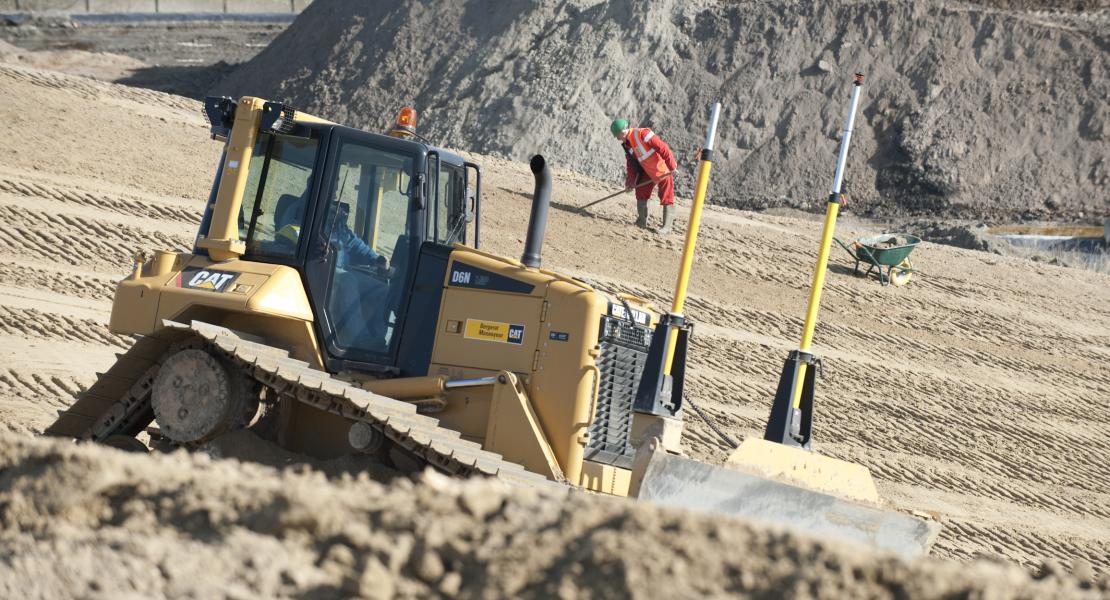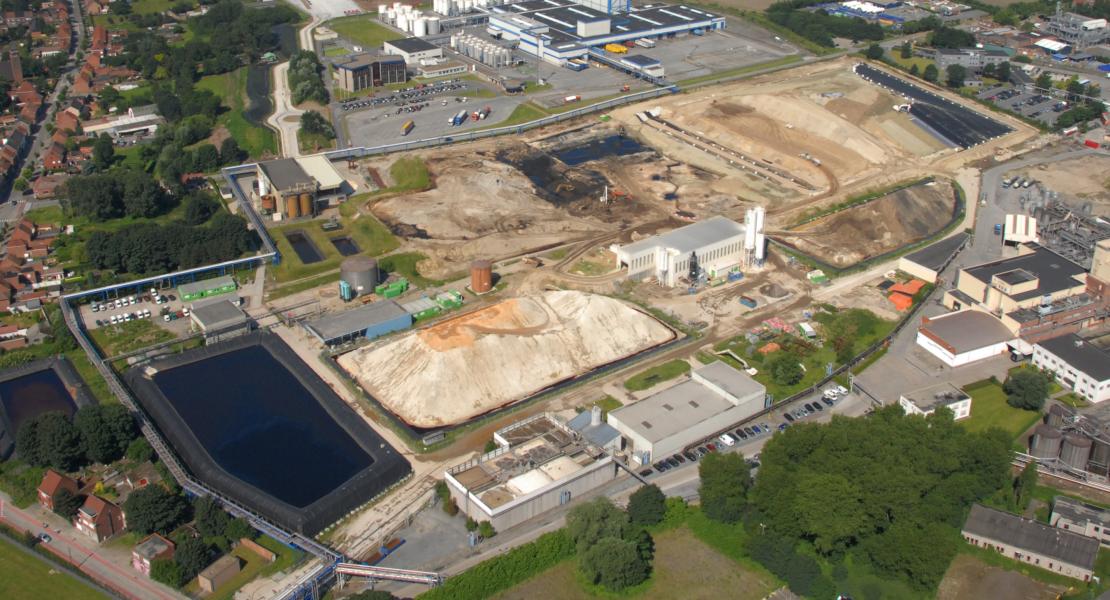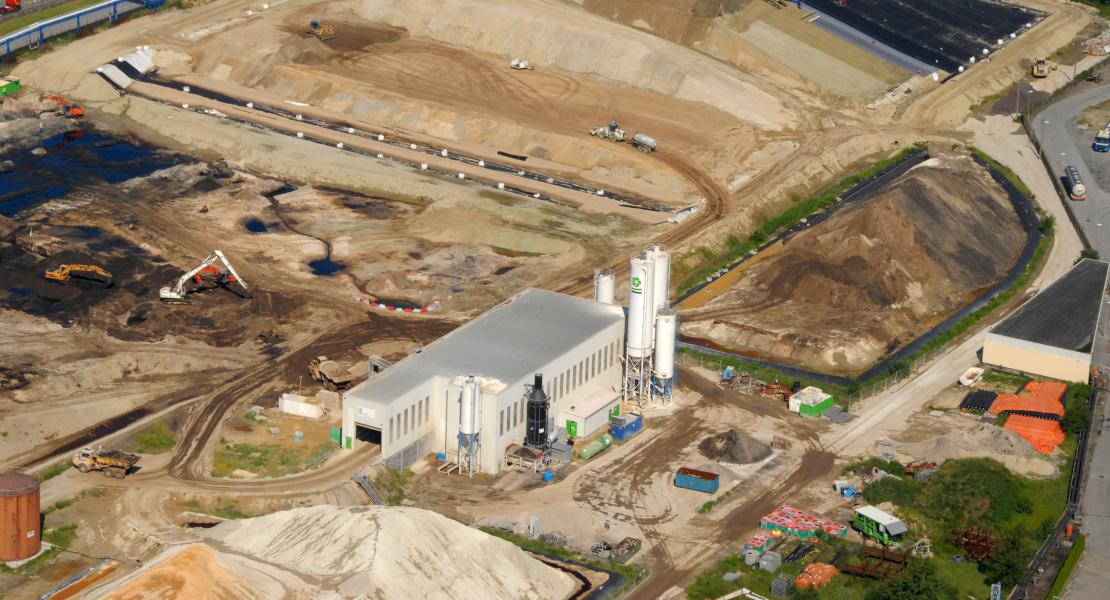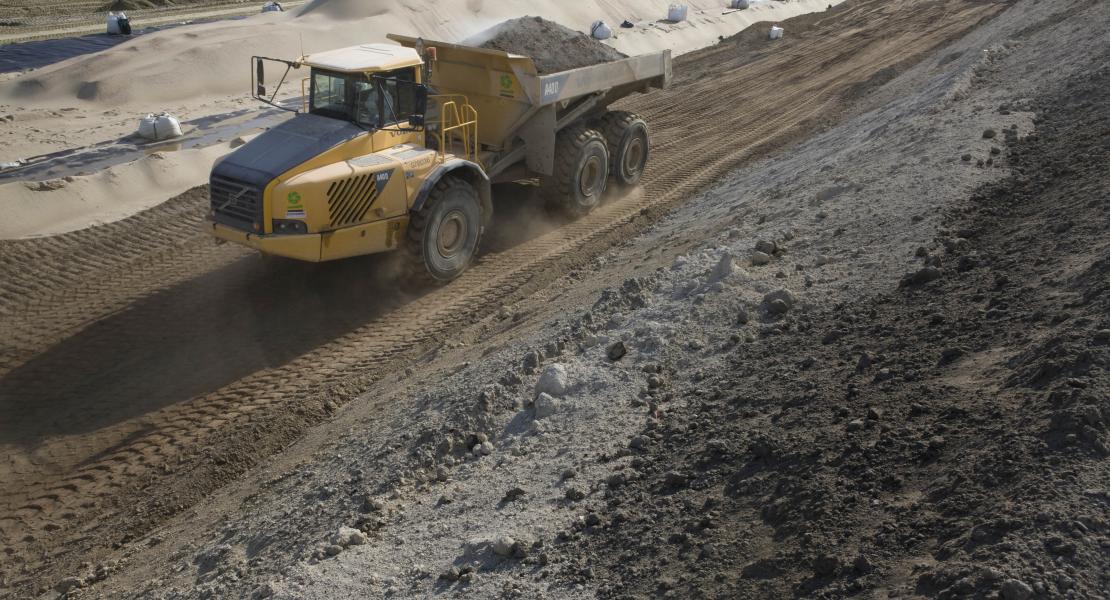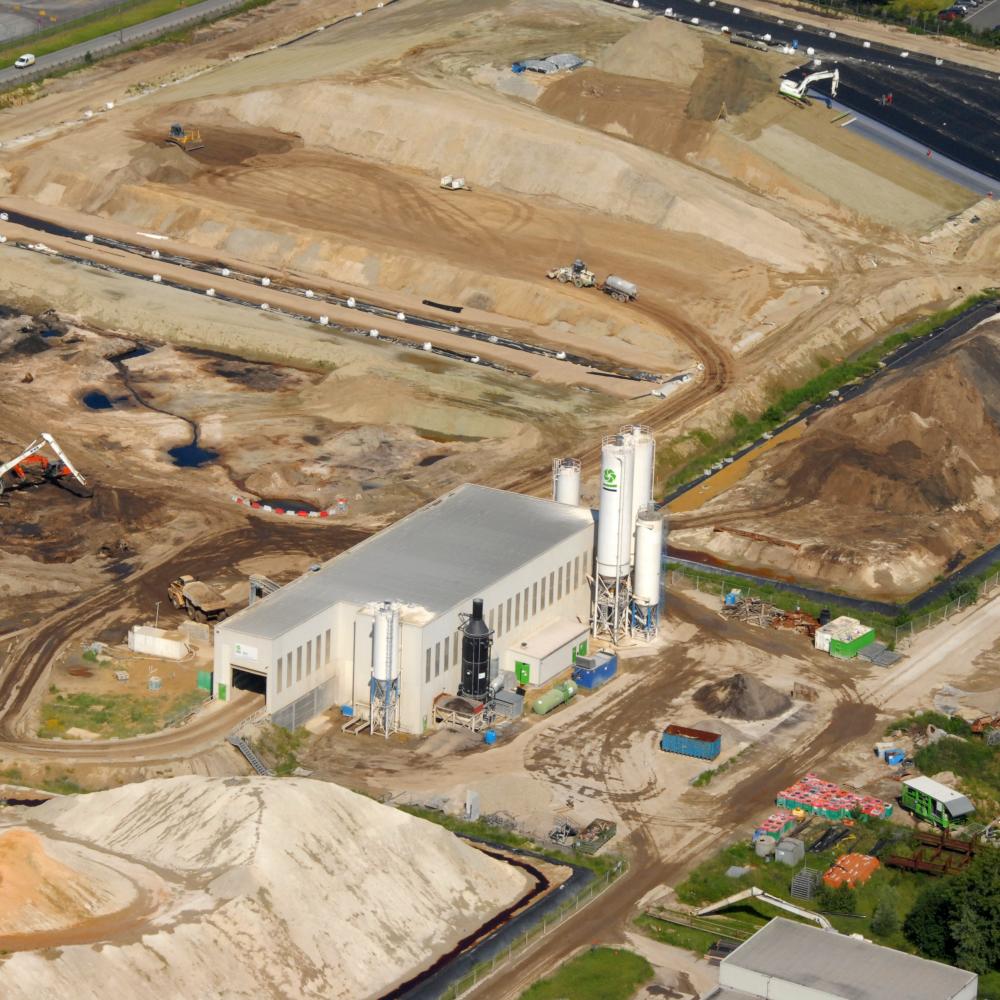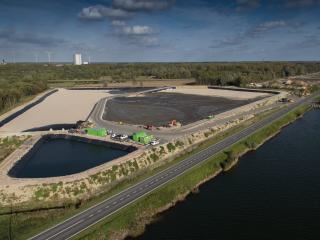In addition to this, the treatment plant was located in a closed building with an air-lock and treatment installation for the extracted air. Any emissions were continuously monitored and the excavation and treatment production altered accordingly.
Our project engineers and technical department joined forces to develop the on-site treatment installation for the acid tar, together with the work methods to successfully execute this complex project. These methods were developed in the design phase and then another six months was reserved for the pilot testing of the solution in order to determine that the selected approach was correct. The dedicated plant was made completely airtight so that harmful odours could not escape and the odours were neutralised after being collected via a vacuum system. The plant was constructed and operational in a record speed of just three months!
In these lagoons the acid tar came in three forms: liquid, viscous and solid/paste. The excavated acid tar was mixed with chemical additives in the new treatment installation, according to methods we had developed ourselves.
Water treatment
In parallel to the remediation of the acid tar lagoons, a full-scale water treatment installation was designed, built and tested for the subsequent groundwater remediation. A major part of the installation was the ozonation unit and then the material underwent biological treatment.
A continuous challenge for this project was the high standard that was set for the end product. DEME proposed a treatment technique in which the acid tar is stabilised using CalDEC (a neutralising additive developed in-house) and then disposed of on site in an engineered cell. By mixing the acid tar with chemical additives, it was neutralised, stabilised and solidified. The result was a stable product in which the acid tar was fixed. This product was then stored in the landfill on-site, in full compliance with the Flemish Vlarem regulations. The result was a 15 m high landscaped mound, with a volume of 270,000 m³.
From a technical point of view, this was an extremely complex project. For example, the acid tar had to be crushed, however, most crushers cannot handle sticky, viscous material. Therefore we made use of conveyor belts that are not only suitable for dry products, but also for liquid and sticky products for treating the material inside the plant. To avoid odour problems, the dumpers were equipped with cover sails and a sprinkler. The handling of the acid tar took place in a closed building with continuous air refreshment and the treatment of the extracted air. An additional complexity was the presence of a nearby residential area.
UXO survey & clearance
Another important aspect of the contract involved performing a UXO survey and the detection and approach taken to the UXO clearance formed part of the contract. To deal with the threat of potential bombs, we deployed a highly advanced preliminary bomb detection system and also established good contacts with the civil defence organisation. The presence of UXO had an enormous impact on the works, with the planning and excavation method fully adjusted to take this into account.
In the design phase, we carried out detailed historical research to uncover the history of the acid tar lagoons and we collected a vast amount of data concerning the bombing raids. Based on this historical research, the site was divided into ‘safe zones’ and ‘potentially dangerous zones’, in which a geophysical detection, combined with the clearance of anomalies preceded the removal of the acid tar. A few large air missiles and several smaller artillery projectiles were found in the lagoons.
DEME nominated two specialised subcontractors for these works. When an UXO was found, it was professionally cleared by DOVO, the Explosive Ordnance Disposal Service of the Belgian Army.
Safety Award
It is worth noting that we were awarded the prestigious IADC Safety Award for this project in 2009. Each year IADC honours one of its member companies that has shown outstanding achievement in safety. The IADC Safety Award is intended to encourage the development of safety skills on the job and to reward those people and companies demonstrating special diligence in safety awareness in the performance of their profession.
